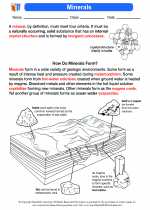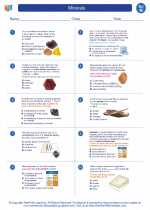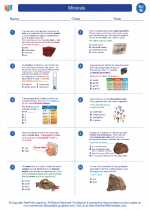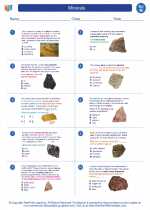Rock
A rock is a naturally occurring solid aggregate of one or more minerals or mineraloids. It may also include organic remains and mineraloids. Rocks are classified into three main types: igneous, sedimentary, and metamorphic, based on their formation processes.
Igneous Rocks
Igneous rocks are formed from the solidification of molten rock material. This can occur either below the surface (intrusive) or on the surface (extrusive). Examples of igneous rocks include granite, basalt, and obsidian.
Sedimentary Rocks
Sedimentary rocks are formed by the accumulation and compression of sediments, such as sand, mud, and organic remains, over time. Examples of sedimentary rocks include limestone, sandstone, and shale.
Metamorphic Rocks
Metamorphic rocks are formed from pre-existing rocks that undergo changes due to high temperature, pressure, or chemical processes. Examples of metamorphic rocks include marble, slate, and gneiss.
Rock Cycle
The rock cycle is a continuous process of formation, transformation, and destruction of rocks. It includes processes such as weathering, erosion, deposition, compaction, and melting, which contribute to the formation of different types of rocks.
Rock Identification
Geologists use various methods to identify and classify rocks, including their mineral composition, texture, and formation environment. This helps in understanding the Earth's history, processes, and resources.
Study Guide
- What are the three main types of rocks?
- Describe the formation processes of igneous, sedimentary, and metamorphic rocks.
- Explain the rock cycle and its significance.
- How do geologists identify and classify rocks?
- Provide examples of igneous, sedimentary, and metamorphic rocks.









